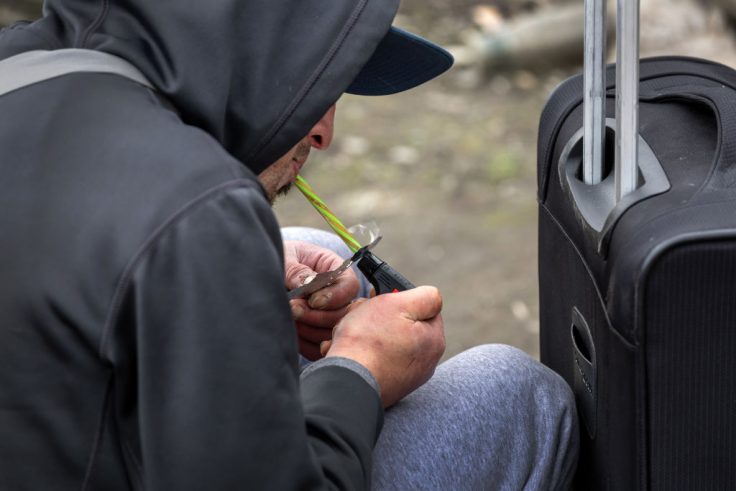California's homeless population has skyrocketed since the state adopted housing policies that critics say enable drug users and fail to treat the mentally ill. Now, the Biden administration is spending more than $3 billion to replicate those policies.
President Joe Biden's Department of Housing and Urban Development in July announced its investment in so-called Housing First programs, which subsidize rent costs for those living on the street but do not impose drug or mental health treatment requirements. California adopted those programs in 2016 and has since seen its homeless population steadily grow. Last year, for example, California was home to 30 percent of the nation's homeless people, despite Californians making up less than 12 percent of the U.S. population. From 2020 to 2022, California's homeless population increased by roughly 6 percent, a rate 15 times higher than the rest of the country.
Biden, during his 2020 campaign, presented himself as a run-of-the-mill Democrat who would restore "normalcy" to America. After taking office, however, Biden has in many cases mirrored California—perhaps the nation's most liberal state—on policy. After California banned the sale of new gas-powered cars by 2035, for example, Energy Secretary Jennifer Granholm credited the state for inspiring her to "move faster and further" toward a green energy transition. The Biden administration went on to introduce environmental proposals that effectively force automakers to sell electric cars over their gas-powered counterparts.
Housing First programs have failed the Golden State, experts told the Washington Free Beacon, because they exclude treatment requirements for issues that commonly plague the homeless, such as substance abuse and mental illness. As a result, homeless people who receive housing subsidies often continue using drugs and fail to become independent, Manhattan Institute senior fellow Stephen Eide argued.
"Other problems are left as sort of afterthoughts, and nothing much ends up being done about them at all," Eide told the Free Beacon. "In practice, actually, this looks a lot more like 'Housing Only' than 'Housing First.'"
The Department of Housing and Urban Development did not return a request for comment.
Californians have soured on Housing First since it formally became the state's strategy to combat homelessness in 2016, Eide said. After the strategy's adoption, the number of unsheltered homeless people in California grew, prompting Eide to call Housing First a "failed strategy."
"The communities that were most passionate about Housing First invested the most money into it—California most notably—and the results were not very impressive," he said.
American Enterprise Institute senior fellow Howard Husock echoed Eide, saying Housing First is "built on false premises."
"If you put people with substance abuse problems and mental health problems into their own four walls without necessarily providing treatment of some kind, including withdrawal from drug addiction, what's the case for this being the best approach?" he told the Free Beacon. "It's just self-evident."
Beyond its adoption of California's homelessness policies, the Biden administration has embraced so-called harm reduction, a public health theory that argues governments should minimize the hazards associated with drug use instead of eradicating it. Biden's Department of Health and Human Services has funneled tens of millions of dollars to harm reduction facilities to fund "smoking kits" and other materials meant to help addicts get high without overdosing. The White House earlier this year also made naloxone, a drug used to reverse opioid overdoses, available over the counter.
California has also worked to advance harm reduction, investing $61 billion in such programs in July. Months earlier, in April, liberal California lawmakers blocked bills to strengthen punishments for fentanyl dealers, arguing that the state should pursue harm reduction instead.
